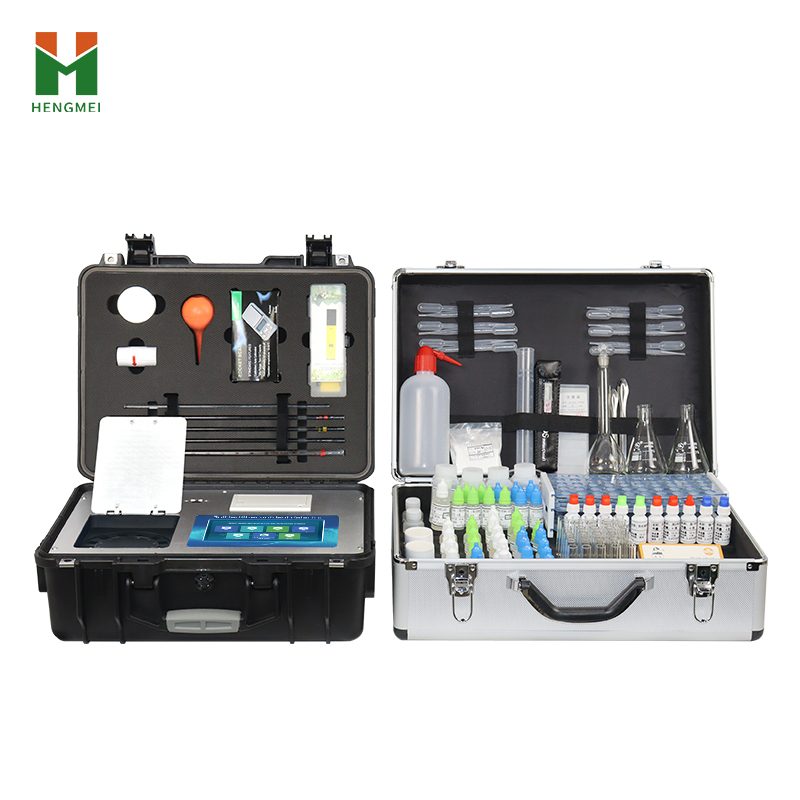Soil is the material foundation of agricultural production, and its nutrient status directly determines crop yield and quality. The traditional fertilization model relies on empirical judgment, leading to increasingly serious problems such as low fertilizer utilization, soil degradation, and environmental pollution. Soil measuring instruments, as the core equipment of modern precision agriculture, provide data support for scientific fertilization by quickly and accurately analyzing soil, fertilizer, and crop nutrient content.

The dilemma of soil management and the need for precision
Extensive fertilization management has led to:
1. Low economic benefits: Excessive fertilization increases production costs. According to surveys, in some areas, nitrogen fertilizer application exceeds crop demand by more than 50%.
2. Deterioration of soil health: Long term unbalanced fertilization has led to soil acidification, compaction, and a decrease in organic matter, resulting in an average decrease of 0.5-0.8 units in soil pH nationwide.
3. Increased environmental risks: Nutrients enter water bodies through runoff and leaching, causing non-point source pollution.
4. Decreased quality of agricultural products: Imbalanced nutrient supply affects normal crop metabolism and reduces the commodity value of agricultural products.
To solve these problems, it is necessary to achieve precise regulation of the "soil fertilizer crop" system. Soil testing instruments are the key tools to achieve this goal, simplifying complex laboratory analysis processes into quick field operations, making scientific fertilization within reach.
Technical principles and performance advantages
Soil measuring instruments are based on the principles of photoelectric colorimetry and electrochemical analysis, and use precision optical systems and intelligent algorithms to achieve rapid analysis of multiple parameters of soil, fertilizer, and crop samples.
1. Core detection principle
• Photoelectric colorimetric method: The instrument uses a professional cold light source with 4 wavelengths (red: 680 ± 2nm; blue: 420 ± 2nm; green: 510 ± 2nm; orange: 590 ± 4nm), and the light passes through the solution after the reaction between the sample and the color reagent to measure its absorbance. According to Lambert Beer's law, absorbance is directly proportional to substance concentration, thus calculating nutrient content.
Electrochemical method: used to measure soil pH value (range 1-14, accuracy 0.01) and salt content (range 0.01% -1.00%, accuracy ± 5%), directly obtaining data through ion selective electrodes.
• Patent technology guarantee: Adopting a precision rotating colorimetric cell design (patent number: ZL201821777724.7) and high-precision filter technology (patent number: ZL202021763837.9) to ensure detection accuracy and stability.
2. Key performance indicators
Detection accuracy: soil nitrogen, phosphorus, potassium error ≤ 1%, organic matter error ≤ 2%, relative error of trace elements ≤ 5%; The single item error of fertilizer is ≤ 0.5%, the three item error is ≤ 1%, and the repeatability error is ≤ 0.03%.
• Detection efficiency: Soil available N, P, and K can be extracted and determined in one go. It only takes 20 minutes to test one sample (three items), and 8 samples ≤ 1 hour.
Stability: The lifespan of the light source reaches 100000 hours, with a linear error of ≤ 0.1%. Instrument stability: no drift in transmittance measurement for 1 hour, and drift ≤ 0.001 in absorbance measurement for 2 hours.
3. System functional characteristics
Intelligent operating system: equipped with Android system, 7-inch touch screen, built-in sample pre-processing video guidance, reducing the operating threshold.
Multi channel efficient detection: 8 rotating detection channels can simultaneously detect 8 samples, greatly improving efficiency.
Expert Fertilization System: Built in over a hundred crop fertilization models, automatically generating recommended fertilization plans based on target yields.
Cloud platform data management: supports multiple data transmission methods such as Wi Fi, 4G, USB, etc., and is paired with cloud platforms for long-term data storage and analysis.
Portable design and battery life: Equipped with a high-strength PVC engineering plastic box, it is powered by both AC and DC, and has a built-in lithium battery that supports continuous operation for 10 hours, meeting the needs of field work.
Application Fields and Solutions
The application of soil measuring instruments has covered the entire agricultural production chain, providing customized solutions for different users:
1. Agricultural Technology Promotion Department: Conduct regional soil surveys, develop scientific fertilization plans, and guide farmers to use fertilizers reasonably.
2. Fertilizer production enterprises: used for product effectiveness verification and formula optimization, achieving "soil testing and fertilizer matching, on-demand production".
3. Planting enterprises and cooperatives: achieve precise management of soil nutrients in the base, reduce production costs, and improve the quality of agricultural products.
4. Agricultural material distributors: Provide soil testing services to farmers, enhance customer loyalty, and promote technical marketing.
5. Research and education institutions: As field investigation and experimental teaching tools, they support agricultural research and talent cultivation.
Through technological innovation, soil testing instruments have transformed complex soil detection into simple on-site operations, achieving the popularization of scientific fertilization. Its precise detection capability, efficient operation mode, and intelligent data management provide key technical support for the development of modern agriculture. With the deepening of precision agriculture, soil measuring instruments will play a greater role in improving farmland quality, reducing fertilizer usage, and increasing efficiency.
Article address:https://www.soiltesting.cn/news1/130.html






